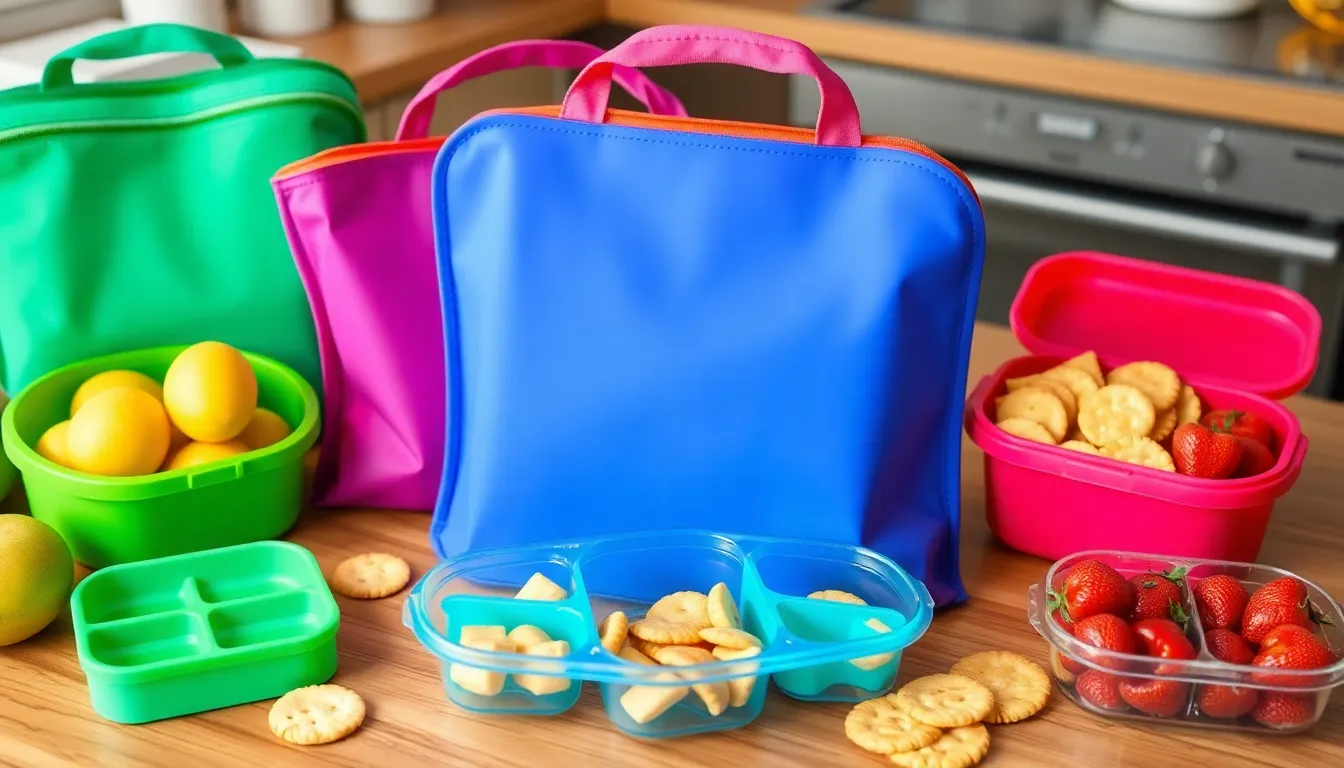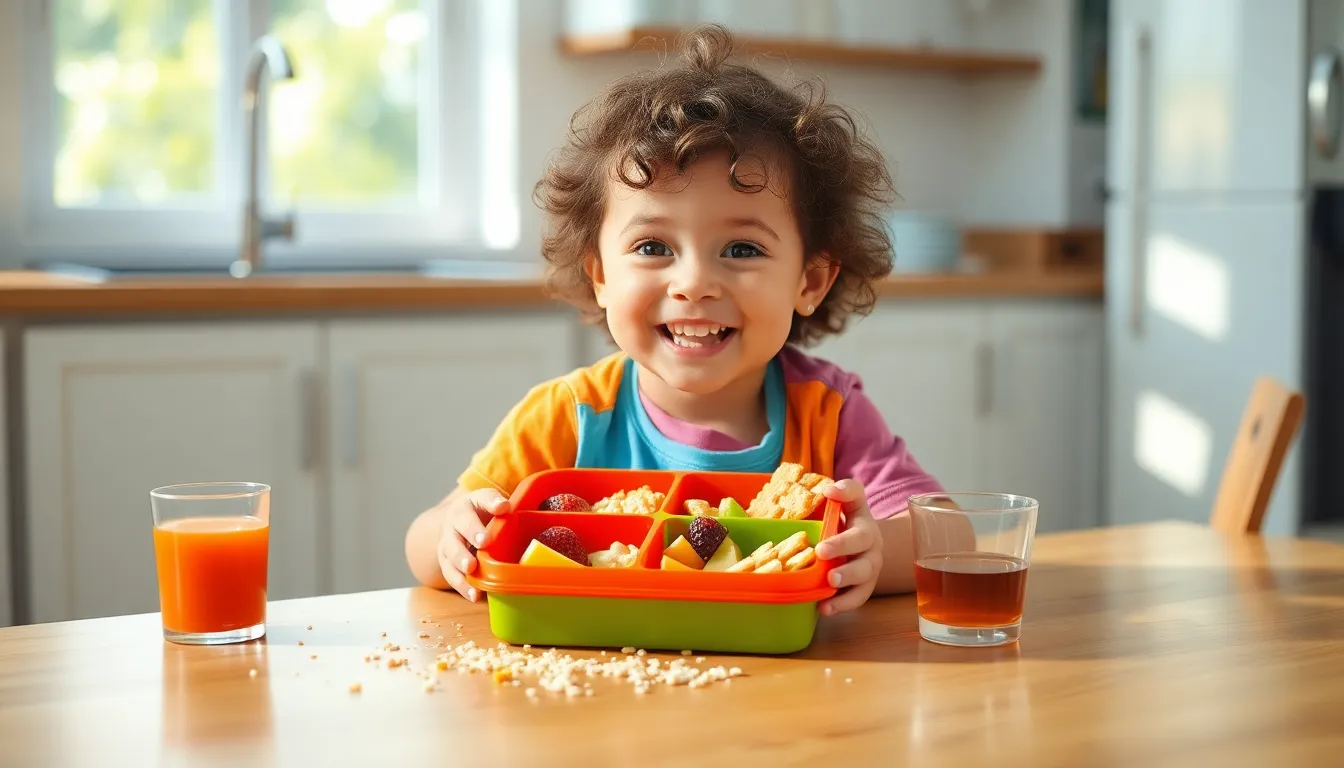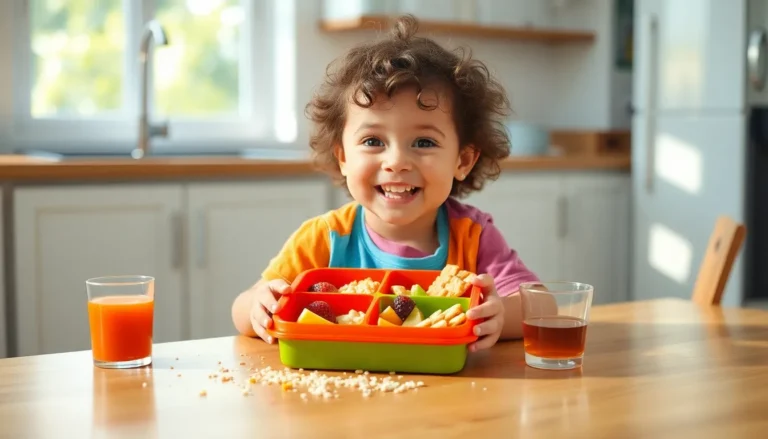Table of Contents
ToggleWhen it comes to snack time for toddlers, chaos often reigns supreme. Picture this: a tiny tornado of crumbs, spilled juice, and a snack container that seems to have a personal vendetta against keeping food inside. Enter the hero of the hour—the toddler snack container. These little wonders not only keep snacks contained but also make mealtime a breeze, or at least a little less messy.
Benefits Of Snack Containers For Toddlers
Snack containers provide multiple advantages during snack time for toddlers. These containers promote organization and convenience, enhancing the overall experience for both children and parents.
Encouraging Independence
Snack containers empower toddlers to manage their own snacks. Children can easily open these containers, which fosters their self-reliance. When they serve themselves, toddlers gain confidence and learn about portion control. Various designs, such as those with easy-to-lift lids or self-sealing features, facilitate this independence. Parents notice that less assistance during snack time frees up their time for other activities, making mealtime enjoyable.
Reducing Mess
Snack containers play a crucial role in minimizing messes. Secure lids keep snacks contained, preventing spills and crumbs. Toddlers are less likely to scatter food around the house when their snacks are stored properly. Cleaning becomes easier because parents find fewer remnants of food on floors or furniture. Many containers feature compartments, allowing for variety without cross-contaminating snacks. Choosing containers with bright colors or fun designs often captures a child’s interest, motivating them to use them properly.
Types Of Snack Containers

Various snack containers cater to toddlers’ unique needs. Each type enhances organization, reduces mess, and promotes independence.
Reusable Snack Bags
Reusable snack bags offer an eco-friendly solution. They come in multiple sizes, making them versatile for different snacks. Toddlers can easily grip these bags, promoting self-sufficiency during snack time. Materials often include silicone or fabric, ensuring safety and ease of cleaning. Parents appreciate their compact nature, allowing for easy storage in lunchboxes or diaper bags. By choosing reusable options, families minimize waste while teaching toddlers about sustainability.
Divided Containers
Divided containers help promote variety in snacks. These containers feature multiple compartments, allowing for different foods in one unit. Toddlers enjoy choosing from multiple options, enhancing mealtime excitement. Made from BPA-free plastic, these containers ensure safety during use. Many designs include leak-proof seals, preventing spills and messes. Divided containers also simplify portion control, guiding toddlers to balanced eating habits. Overall, they make snack time more engaging and organized for both parents and children.
Features To Look For
Choosing the right snack container involves considering several critical features.
Safety and Materials
Prioritize safety when selecting snack containers. Look for options made from BPA-free materials, ensuring no harmful chemicals leach into food. Silicone containers provide flexibility and durability, making them an excellent choice. Dishwashers can often clean these containers easily, maintaining hygiene. Additionally, ensure that the design features smooth edges to prevent cuts and scrapes. Containers should also be free from any small parts to avoid choking hazards. Safe, high-quality materials keep toddlers healthy while they enjoy their snacks.
Size and Portability
Consider size and portability for convenience. Snack containers need to fit well in little hands, making them easier for toddlers to grip. Choosing containers with compact designs helps parents carry snacks on the go, whether for playdates or family outings. Multiple sizes provide flexibility to pack different snack portions, adapting to various activities. Containers that fit easily into lunch bags or backpacks ensure hassle-free outings. Size and portability should also accommodate portion control, aiding toddlers in self-serving their snacks.
Tips For Choosing The Right Snack Container
Selecting the right snack container enhances a toddler’s mealtime experience. Specific considerations help ensure that containers meet their needs effectively.
Age Appropriateness
Age plays a crucial role in choosing the right snack container. Containers designed for toddlers typically feature smaller sizes that accommodate small hands. Look for options that encourage self-feeding and independence. Younger toddlers benefit from simple, easy-to-use containers, while older toddlers may enjoy ones with more compartments for variety. Consider the durability of materials as well; some containers withstand rough handling better than others. Choosing a container appropriate for a child’s age helps promote confidence during snack time.
Ease of Cleaning
Cleaning convenience significantly impacts the selection process. Opt for containers that are dishwasher safe to simplify cleanup after use. Materials such as silicone and BPA-free plastic often provide easy maintenance. Smooth surfaces lessen the chance of food particles getting stuck. Some containers also offer removable compartments, making them even easier to clean. Parents appreciate products that require minimal effort to keep hygienic, especially when dealing with messy snacks. Selecting containers that clean easily ensures that snack time remains enjoyable and stress-free for everyone involved.
Choosing the right snack container can transform snack time into a more enjoyable experience for toddlers and parents alike. With options available that promote independence and reduce mess, parents can feel confident in their choices. The variety of designs and materials ensures that there’s a perfect fit for every child’s needs. By prioritizing safety and ease of cleaning, parents can create a hassle-free environment that encourages healthy eating habits. Investing in toddler-friendly snack containers not only simplifies mealtime but also fosters a sense of responsibility in young children as they learn to manage their own snacks.




